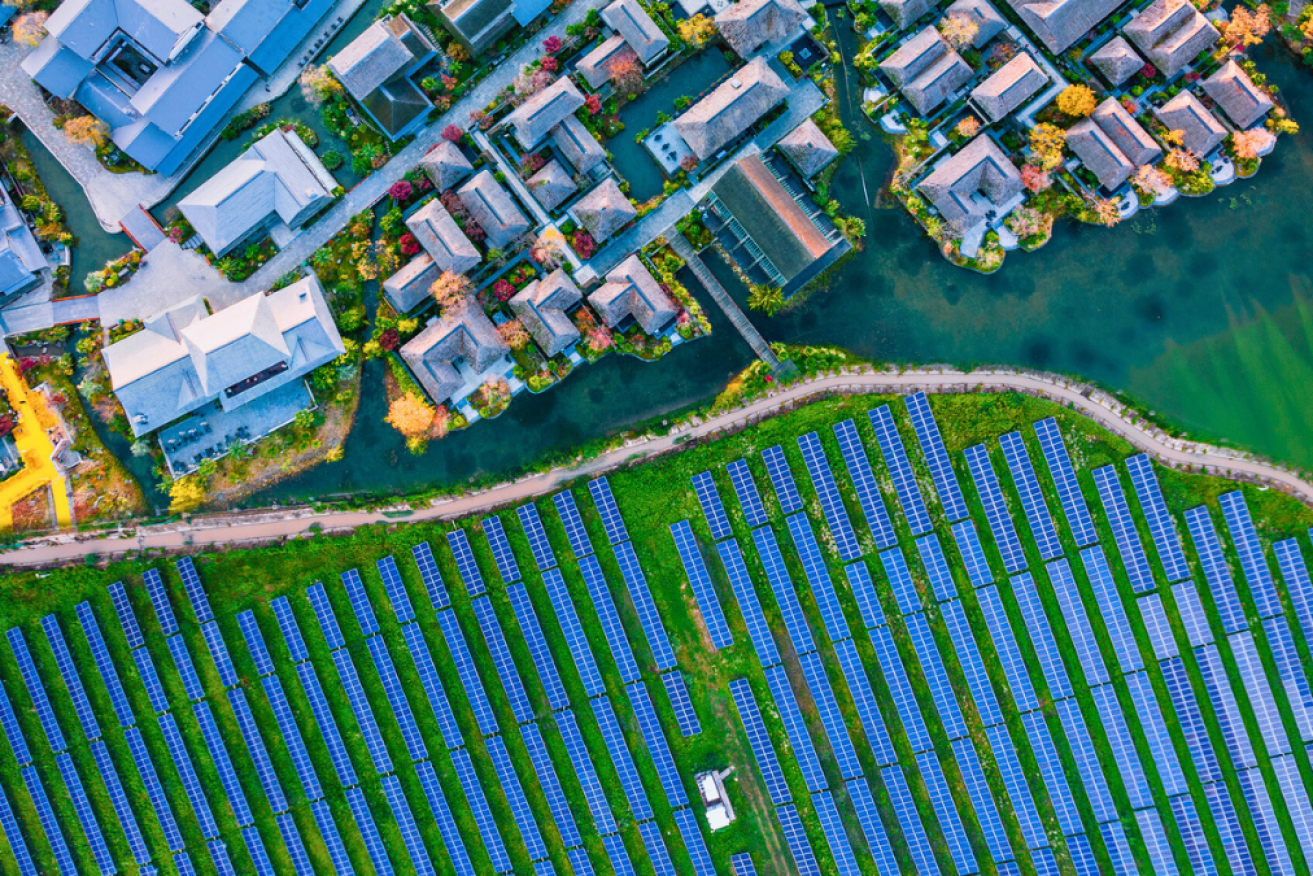Energy bill relief, but faster renewables shift needed to permanently slash prices

We have been enduring a massive fossil fuel-induced cost of living crisis. Photo: Getty
Finally, we are seeing some stabilisation of fossil fuel hyperinflation and price relief for energy consumers, especially in NSW.
Sydney Ausgrid electricity consumers will see 3 per cent retail price declines for the new financial year starting 1 July 2024 under the Default Market Offer (DMO) draft ruling from the Australian Energy Regulator (AER) this morning, and small and medium enterprise (SME) customers a much more significant decline of 10 per cent. The default market offer is a maximum price that retailers are allowed to charge.
Prices for Endeavour Energy in the greater Sydney region will see retail consumers prices fall 2-7 per cent year on year, and SME’s 4 per cent. Essential Energy customers’ bills will be flat year-on-year.
Relative to the RBA’s 3.3 per cent forecast CPI inflation increase for FY2024, this is welcome news, with price changes for all residential and small business customers on standard retail plans less than the rate of inflation.
We have been enduring a massive fossil fuel-induced cost of living crisis. The solution is to end our fossil fuel addiction and move to a more sustainable low cost, renewables-powered energy system.
The energy bill relief flagged today reflects a number of factors, including some moderation of the recent fossil fuel hyperinflation driven by fossil fuel giants’ war-profiteering off the back of sanctions triggered by Putin’s invasion of Ukraine. Importantly, it also reflects an increase in firmed renewables in the system – by far the cheapest form of power, and the permanent solution for locking in sustainable, lower cost, reliable energy supply for Australia.
Yet even with 50 per cent declines in wholesale electricity prices over calendar year 2023, NSW consumers are only seeing relatively marginal price reductions.
To permanently drive lower energy costs in NSW, we now need to see the state government and Energy Minister Penny Sharpe rapidly and emphatically invest in accelerating deployment of distributed energy resources (DER) such as rooftop solar and batteries across the state, in households and businesses.
Minister Sharpe should prioritise upgrades to social housing, and a solution to the split incentive preventing most renters from benefiting from electrification of everything, where the cost-saving benefits of installing renewables accrue to the tenant rather than the landlord who covers the capital costs, disincentivising the latter.
The more local distributed supply and storage, the less need for ever expanding grid transmission costs – a key reason retail prices are not moderating as quickly as would otherwise be the case, with the costs of poles and wires comprising some 40 per cent of bills. DER is also the fastest to deploy, obviating the 5-10 years timeframe for transmission projects to be evaluated, approved and built. Optimising and leveraging existing grid infrastructure with smart technology solutions available today to identify “spare” capacity already in the network is also needed.
The time for the government to act to accelerate DER is now. We need to see community energy generation capacity, supply and grid resilience enhanced with virtual power plants (VPP), where consumer and industry solar and batteries operate as a network for energy generation, electric vehicle to grid charging (V2G) as our fleet transitions to EVs, and demand side participation (DSP), which encourages consumers to adjust or timeshift their electricity usage in response to market signals or grid conditions in return for a financial reward.
Climate Energy Finance yesterday joined federal MPs Allegra Spender, Helen Haines, Zali Steggall and Senator David Pocock for the launch of their national People Power Plan, designed to get households out of the fossil fuel trap with home electrification and rooftop solar. This will give families cost-of-living relief now and financial security into the future by eliminating a key driver of inflation – hyper-expensive fossil-fuel based energy.
Complementing distributed energy resources, we also need much faster planning approval of utility scale renewable energy developments in NSW. Current delays of 3-10 years for approvals of solar and wind developments are ridiculous and untenable in the face of the concurrent current energy, cost of living and climate crises impacting households and businesses.
A comprehensive program to rollout both large-scale wind, solar and batteries and consumer energy is also critical if we are to achieve state and federal renewable energy and emissions reduction targets. And it underpins the phase out of polluting, unreliable end of life coal power such as Origin Energy’s 40+ year old Eraring coal power station on the central coast – Australia’s biggest – slated for closure in 2025.
There is no case for Minister Sharpe to subsidise Origin to the tune of the estimated $200-400m per annum it would require to keep Eraring open – in effect a massive tax on the people of NSW that transfers wealth to a private coal asset operator.
The government stands on the brink of a golden opportunity to transform the state’s energy system. It’s incumbent on it to now build on the momentum we are seeing in reducing energy bills and put permanent downward pressure on power prices. That means an end to fossil fuels and a redirection of public capital investment to the transition to cheap, clean firmed renewables, in the interests of all.
Tim Buckley is a director at Climate Energy Finance








